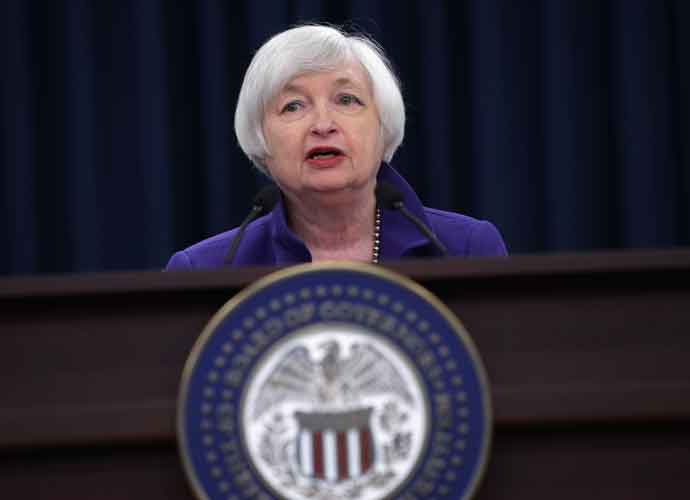

WASHINGTON, DC - DECEMBER 16: Federal Reserve Bank Chair Janet Yellen holds a news conference where she announced that the Fed will raise its benchmark interest rate for the first time since 2008 at the bank's Wilson Conference Center December 16, 2015 in Washington, DC. With unemployment at 5-percent and the economy showing signs of strength, the Fed raised the interest rate a quarter of a percentage point and many experts believe the interest rate on short-term loans could go as high as one percent by the end of 2016. (Photo: Getty)
The United States is currently on track to add trillions of dollars to the U.S. national debt by 2034.
Numerous economic issues, including borrowing money quicker than anticipated, rising spending and interest rates and the cost of social security and Medicare have made the debt rise quickly. The older population is also proving to be a financial burden to retirement programs.
The Congressional Budget Office reported Tuesday that the national debt is expected to exceed $56 trillion in the next decade. The large budget deficits, referring to the nation spending more than what it receives, are anticipated to continue as the debt grows.
The budget deficit for 2024 is projected at $1.9 trillion and was previously projected at $1.6 trillion. By 2034, the deficit may grow up to $2.9 trillion.
Subscribe to our free weekly newsletter!
A week of political news in your in-box.
We find the news you need to know, so you don't have to.
The large deficits during the Biden administration have been aligned with his costly aid packages for Ukraine and Israel, as well as student loan forgiveness.
Debt held by the public currently makes up 99% of gross domestic product and will soar to 122% by 2034.
Former President Donald Trump’s 2017 tax cuts expire next year and lawmakers must decide if they will renew them.
President Joe Biden (D) said that he would support continuing the tax cuts targeted at low or middle-class people, while Trump said he would renew all of the tax cuts he originally implemented. The program is expected to cost five trillion over the next decade.
The budget office also reported that immigration is helping to reduce deficits and debt. New immigrant workers are expected to pay almost $1 trillion more in taxes than they will use through government benefit programs. The surge of immigration to the United States is expected to include 8.7 million more immigrants between 2021 and 2026 than originally expected. Their lower consumption of federal benefits will continue to remain lower than the taxes that they pay.
Texas is currently the focus of the national redistricting battle, but Florida may soon join…
Defense Secretary Pete Hegseth reposted a video on X that features Doug Wilson, the co-founder…
On Friday, President Donald Trump dismissed Billy Long as commissioner of the Internal Revenue Service…
Police bodycam footage revealed at the trial of Jared Wise, who currently serves as a…
On Monday, President Donald Trump ordered the deployment of the National Guard to the nation’s…
Two senior members of the Federal Bureau of Investigation (FBI) who blocked efforts to expose…